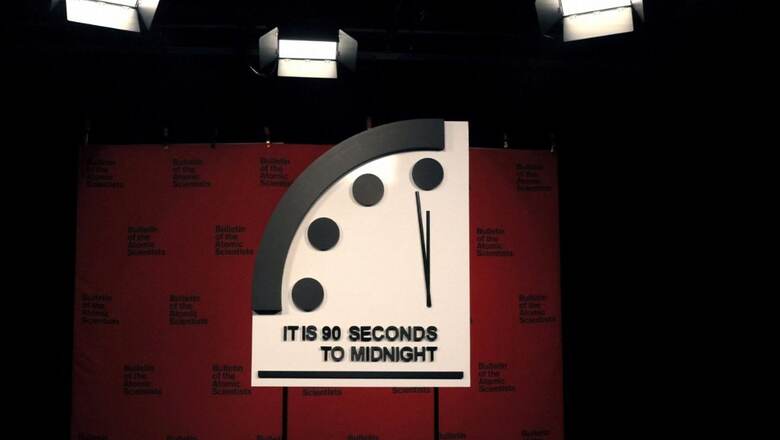
views
Scientists have set the Doomsday Clock’s hands closest they have ever been to “Doomsday” – the day of nuclear Armageddon – at 90 seconds to midnight. Scientists said that they shifted the clock’s hands because of the threat of a new nuclear arms race, the Ukraine war and climate change.
The Bulletin of the Atomic Scientists also cited nuclear-armed Israel’s Gaza war as one of the reasons.
“Conflict hot spots around the world carry the threat of nuclear escalation, climate change is already causing death and destruction, and disruptive technologies like AI and biological research advance faster than their safeguards,” Rachel Bronson, the Bulletin’s president and CEO was quoted was saying by news agency Reuters.
The scientists expressed concerns that China, Russia and the US spent huge sums to modernise their nuclear arsenal as well as expand them contributing to the “ever-present danger of nuclear war through mistake or miscalculation”.
They also expressed concern over lack of action on climate change as well lack of assessment of risks linked to “misusing” emerging biological technologies and Artificial Intelligence (AI) tools.
The clock was invented by J Robert Oppenheimer and fellow US scientists in 1947. They were all involved in the development of the atomic bomb.
The aim of the clock was to warn the public and exert pressure on global leaders to ensure that nuclear weapons were not used again.
“A durable end to Russia’s war in Ukraine seems distant, and the use of nuclear weapons by Russia in that conflict remains a serious possibility. In the past year Russia has sent numerous worrying nuclear signals,” Bronson said.
“As a nuclear state, Israel’s actions are clearly relevant to the Doomsday Clock discussion. Of particular worry is that the conflict might escalate more broadly in the region creating a larger conventional war and drawing in more nuclear powers or near-nuclear powers,” she said.
“The world in 2023 entered into uncharted territory as it suffered its hottest year on record and global greenhouse gas emissions continued to rise. Both global and North Atlantic sea-surface temperatures broke records, and Antarctic sea ice reached its lowest daily extent since the advent of satellite data,” Bronson further added.
Climate change was added as a factor in setting the clock in 2007. Bronson said despite $1.7 trillion new investments in clean energy, the steps being taken to reduce greenhouse gas emissions are “grossly insufficient” when it comes to mitigating climate change.




















Comments
0 comment